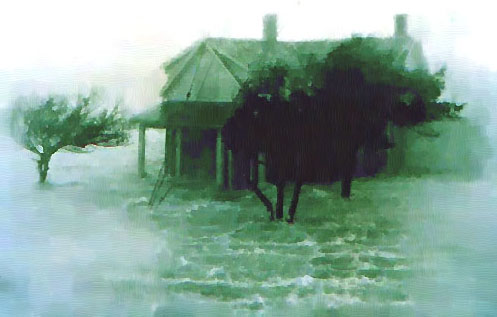Beware Early Season Hurricanes, Researcher Warns


Hurricanes that strike the Gulf Coast in June can be as deadly or more deadly that those that hit later in the season, one researcher warns.
That's partially because hurricanes that make landfall in this region are more likely to also develop over the Gulf of Mexico, giving forecasters less time to warn residents, said Bill Merrell, a hurricane researcher at Texas A&M University at Galveston. And June is the peak month for hurricanes in the Gulf, Merrell told LiveScience.
Quite often, hurricanes that arise in this region also tend to speed up and intensify as they make landfall, Merrell added. That contrasts with tropical cyclones — hurricanes and tropical storms — that arise in the Atlantic Ocean basin, which don't tend to speed up and generally weaken upon landfall. Merrell said the physics governing this phenomenon haven't yet been determined, although it likely has to do with the fact that the Gulf hurricanes are young and often still developing.
"These are kind of trick things — you think you've got a small hurricane out there and then it blossoms into a pretty big one," Merrell said.
The northern portion of Texas' coast is particularly vulnerable to June hurricanes: About two-thirds of the hurricanes that have struck in that area have formed in the Gulf of Mexico, Merrell said. That's because the area is directly in the path that many Gulf hurricanes take, as the cyclones tend to head west and north, he said.
While Tropical Storm Andrea won't reach hurricane status, it did form in the Gulf and strengthened as it moved toward the Florida peninsula, causing drenching rains and spawning tornadoes.
Merrell had this advice for Gulf Coast residents in preparing for hurricanes: "If you see a hurricane in June, be worried that it may accelerate and intensify. It could end up being much worse than initially expected."
Get the world’s most fascinating discoveries delivered straight to your inbox.
Hurricane Audrey, which struck in 1957, is a good example of a dangerous Gulf-formed cyclone. It was initially a Category 1 storm on the Saffir-Simpson scale, but suddenly intensified to become a Category 4 hurricane a short distance from the coast. It killed about 500 people, making it the sixth-deadliest hurricane in U.S. history, Merrell said.
Email Douglas Main or follow him on Twitter or Google+. Follow us @OAPlanet, Facebook or Google+. Original article on LiveScience's OurAmazingPlanet.



